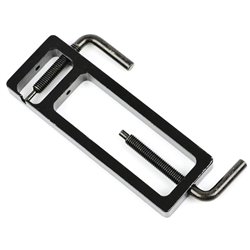An Ekranoplan, also known as a Wing-in-ground (WIG) effect machine, is a unique type of vehicle that operates by...
No products
Product successfully added to your shopping cart
There are 0 items in your cart. There is 1 item in your cart.
Search Tips
Christmas and New Year
We are dispatching orders every weekday apart from Christmas Day, Boxing Day and New Year's Day.
If you order is time critical, select next day delivery at checkout.
The shop in Sandown is closed from 25th December, reopening on 30th December.
What is a pinion gear on a model railway locomotive?
A pinion gear (often called a pinion cog) is a small metal cog that can be found fitted to the shaft of a model's motor.
Not all model railway locomotives have a pinion cog with many featuring a long worm screw instead, but whichever is used, their purpose is to connect the rotating movement of a motor's shaft to a series of gears to provide movement to the wheels.
Pinion cogs were commonplace in the motors of model railway locomotives of the '70s and '80s (particularly Hornby and Lima models). They were initially made from alloy but later from brass, this was due to alloy versions being prone to failure.
Pinion cogs are press-fitted to the motor shaft, so replacing them requires a special tool called a Pinion Removal Tool. When a pinion cog is about to fail, a loud screeching noise can often be heard coming from the motor. A pinion cog that has already failed will result in the motor revving freely while the model remains stationary.
Click here to receive the tips weekly in your mailbox. You can unsubscribe at any time.








